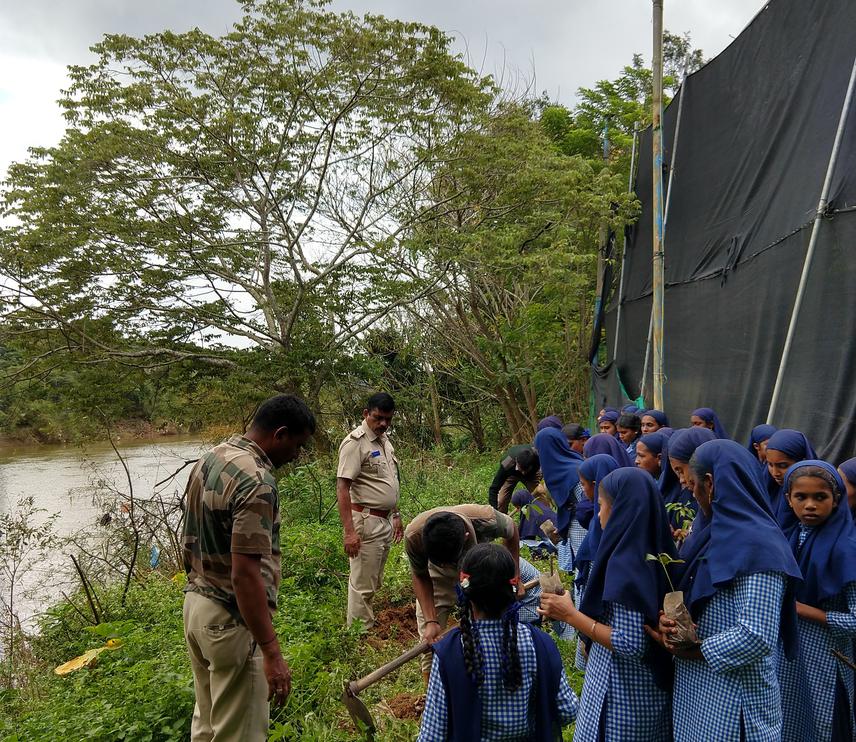Neethi Mahesh
Other projects
14 Dec 2020
Prioritizing Conservation Guidelines for Rivers Using Digital Platforms and Radio- Telemetry on Tor, a Migratory Fish
Applied scientific research using findings from spatial ecology of Mahseer fish, coupled with outreach activities that stress on participation from educational institutions and documentation of indigenous knowledge, aims to provide options and enable support for location specific conservation, in the Kaveri river catchment, in Kodagu district.
A pilot project carried out with schools in the form of water quality assessments in the catchment area, has set the necessary stepping stone to launch a long term citizen science based, river monitoring network, with continued systematic integration of local communities. Furthermore, the riparian habitat vegetation assessment, as part of the spatial ecology study, has potential for conservation efforts that incorporate indigenous knowledge of the Jenu Kuruba, tribal community in Kodagu district.

The health and function of riparian and aquatic ecosystems can be monitored using quantitative, process-based, repeatable metrics in order to restore and conserve riverine environments important to the survival of indicator freshwater fish, such as Mahseer. To increase our understanding and better assess the condition of riparian and aquatic ecosystems, the project links quantitative assessments of physical habitat such as water quality and biotic communities. A pilot water quality and river monitoring assessment carried out in the earlier phase, proved to be successful due to the enthusiasm and cooperation of educational institutions; hence the present ongoing work is a continuation of outreach through citizen science and conservation education with schools and colleges, in Kodagu district. Participatory research in the form of citizen science, will enable a democratic approach towards catchment monitoring and reporting on a citizens’ platform called, “Our River, Our Life”. The work and platform ensues a vision to stimulate environmental and ecological consciousness with the present generation of children in Kodagu district. There seems to be an increasing trend where the baselines of perception of the environment is shifting because children experience very little, if any, pristine nature and the nature they do encounter daily is highly regulated, therefore as adults these children may value structured nature over wild nature because it is what they know to be “natural”.
“Our River, Our Life”, as a platform is incorporated into the existing eco club, curriculum for schools which are located in close proximity to the river, ensuring participation and lending a voice to children who are an integral part of the landscape. Children in this sphere share their experiences and knowledge of surrounding spaces, in relation to their lives and the river Kaveri and they get hands on experience testing the water quality of the river, with simple and easy to follow tests to give them an understanding of how various anthropogenic activities are affecting the river, thereby acting as a crucial learning and monitoring tool. As a citizen science- monitoring initiative, valid water quality data collected by groups, can additionally help inform the wider public, landowners, land managers, research organisations, and catchment and water management authorities on the health and status of the, Kaveri river.
Furthermore, the completed riparian habitat assessment for Mahseer spatial ecology in the study area, with the Jenu Kuruba (honey collectors) - forest dwelling tribe, will generate a guide for native flora in the local dialects and English. The riparian habitat in the forest zone, which comes under the jurisdiction of the Karanataka Forest Department, has highly diverse flora and fauna, with a high diversity of wildlife dependent on the flora, along with freshwater fish such as Mahseer. The riparian flora guide, which will be produced with help from the district Forestry College, is intended to be valuable documentation of indigenous knowledge, and will aid with identification of native trees for planting and restoration of riparian vegetation, to support biodiversity along the river. The riparian vegetation assessment, therefore, additionally provides the opportunity to raise a parent, native plant nursery based on tribal knowledge to bridge the prevailing knowledge gap on riparian tree species. Once the parent nursery has been established, with support from the Jenu Kurubas and the Karnataka Forest Department, saplings will be distributed to schools identified along the river, who are to be entrusted as custodians to aid with riparian habitat restoration in the agro- forest zone, of the Kaveri river, along with saplings made available to citizens’ of Kodagu district interested in river conservation, through riparian habitat management.